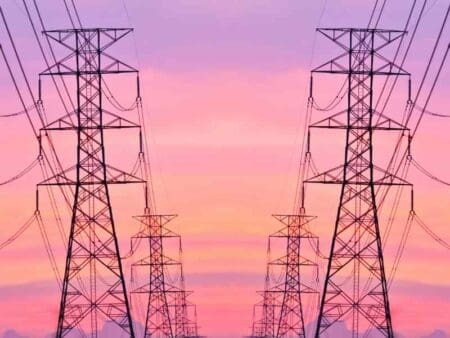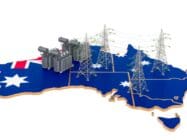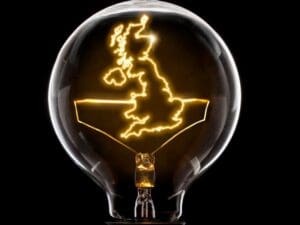
This week’s Smart Energy Finances looks at a deal between an energy trading company and a decision tech developer to improve price optimisation, which involves simulations of market dynamics based on the transmission grid.
Also on the radar are stats from BNEF showing how, in 2022, clean energy activities generated at least $2.56 trillion globally and the latest green bond from E.ON valued at a total of €1.5 billion ($1.6 billion).
Energy trading optimised by grid physics
US-based SESCO Enterprises has announced the use of a mathematical optimisation model to simulate market dynamics based on the transmission grid.
Namely, the power trader has signed on with Gurobi Optimisation LLC, which develops decision intelligence tech, to support their price optimisation.
As a trading firm in the energy markets, SESCO’s goal is to simulate the condition of the national grid, as well as consumer demand for the electricity it delivers.
These outputs simulate energy market dynamics and become inputs to the models SESCO has built to determine bid pricing at auction.
“The unique thing about electricity markets is that prices aren’t really determined by people buying and selling in an order book. Next-day prices are determined at the ISO (Independent System Operator) auction, where clearing prices are often set by the outcome of an optimisation solve – typically using tools like Gurobi,” explains Dylan Modesitt, chief investment officer of SESCO.
“So using the partial information we have, we try to determine what the optimal pricing would be.”
Have you read:
EDF Renewables Israel to model solar energy data for trading insights
UK and Australian energy trading portfolios in attempted hack
SESCO’s business involves speculating on next-day electricity prices, as well as the longer-term forward markets for trading power.
“Our trading expertise is about the congestion component of price, which is the kind of pricing differential that arises from transmission lines being saturated at their limit,” explained Modesitt.
“And when transmission lines are saturated to some local limit, loss is going to emit as heat. So to avoid any kind of catastrophic failure, price signals are sent on either side of that transmission line. It’s a lot of demand speculation, and it requires an understanding of the actual physics of the grid.”
SESCO began building out mathematical models and used them to solve toy problems with another commercial solver.
However, states the trader, due to several million constraints and variables, either the incumbent solver was unable to find feasible solutions, or each solve simply took too long to be useful.
Hence the turn to Gurobi, which they state provides a solution that can capture the complex effects of the physical grid state as it impacts market outcomes.
Specifically, the advanced optimisation techniques used by Gurobi’s solver, states SESCO, improve the pricing precision and capital efficiency of their trading approach.
Listed global firms hit $2.56 trillion in clean energy revenues
According to analysis from BloombergNEF (BNEF), in 2022 clean energy activities generated at least $2.56 trillion globally, with power utilities and renewable manufacturers accounting for two-thirds of the figure.
The figure forms 2.6% of GDP, according to BNEF’s Clean Energy Exposure Ratings, which identified and rated over 8,000 listed companies with revenue exposure to clean energy activities, from over 50,000 assessed.
Listed electric utilities like EDF, Enel and E.ON accounted for $1.06 trillion (42% of the total) in clean energy revenues, followed by renewable energy manufacturers and developers including CATL, Vestas and Trina Solar, contributing $628 billion (25%) in clean energy revenues in 2022.
“While automakers like Volkswagen and Toyota are among the biggest earners in the rankings, their exposure remains low and so the auto industry only contributes $370 billion to the total,” said Mike Daly, lead author of the report.
Also from Smart Energy Finances:
Glasgow’s SMS acquires heat pump specialist
BEV fires shoot down Nikola shares
E.ON issues €1.5 billion in green bonds
E.ON has successfully issued two bond tranches with a combined volume of €1.5 billion ($1.6 billion), backed by a combined peak orderbook of €4.3 billion ($4.7 billion).
Both tranches value €750 million ($815.6 million) each, with the first maturing in March 2029 and the second in August 2033.
E.ON’s CFO Marc Spieker commented on the green bonds: “The high demand from investors underlines again that we are on the right track with our strategy, which is focused on sustainability, digitalisation and growth.
“E.ON is determined to drive forward the energy transition in Europe. We want to invest a total of €33 billion ($35.9 billion) in the energy transition by 2027. Green bonds are an important financing instrument to do this, and we will continue to use them for our financing in the future.”
According to E.ON, a positive market environment has already allowed them to prefund financing needs for the upcoming 2024 fiscal year, while 2023 funding needs were already covered successfully by a €1.8 billion ($2 billion) bond issuance in January.
The proceeds of this green bonds will thus be used to finance and/or refinance Eligible Green Projects as defined in E.ON’s Green Bond Framework.
Bank of America Securities, Deutsche Bank, Natwest Markets and Unicredit served as active bookrunners in the transaction.
What are some of the strategies you’ve seen companies use to improve their energy trading and analytics? Are there any you’d like to see covered? Let me know.
For the latest finance and investment news coming from the energy sector, make sure to follow Smart Energy Finances Weekly.
Cheer,
Yusuf Latief
Content Producer
Smart Energy International
Follow me on Linkedin









